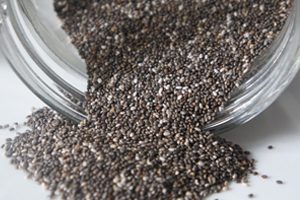Recent Advances in Diabetes Research
Diabetic Research News!
Scientists have been working on new techniques that have made this an exciting time in diabetes research. Previously, we only had a few promising approaches to finding a cure for diabetes. Now we have numerous possibilities related to prevention and even a cure for both type 1 and type 2 diabetes.
1. Insulin Producing Stem Cell Implants
In July 2017, ViaCyte, a California-based company began clinical trials which involve implanting type 1 diabetes (T1D) patients with the company’s PEC-Direct device. These credit card-sized implants carry cells that are derived from stem cells which are designed to mature into specialized pancreas cells. The implants are placed just below the patient’s skin and are designed to release insulin automatically whenever necessary. The hope is that when these cells mature, they’ll take the place of daily insulin injections by producing insulin when needed.
2. Existing Drug may Prevent onset of Type 1 Diabetes

Recent studies show that an existing drug known as Methyldopa which is often prescribed to treat hypertension and high blood pressure could also inhibit the DQ8 molecule without interfering with the immune functioning of other cells. The researchers have confirmed their findings in a clinical trial of 20 type 1 diabetes patients. According to the researchers, these findings could have major implications on both the prevention and treatment of autoimmune diseases including diabetes.
3. A New type of Insulin-Producing Beta Cell has been Discovered!
Scientists have found a brand new type of insulin-producing beta cell hiding within the pancreas. This discovery provides insight into how T1D works and also offers new hope into even treating the disease. T1D occurs when the immune system attacks and kills off insulin-producing beta cells. Since insulin helps regulate our blood sugar, T1D patients are left reliant on regular insulin injections.
While type 1 diabetes can be managed effectively, in order to properly treat the condition, scientists need to find a way to regenerate beta cells and prevent the immune system from attacking them in future. Although we are getting better at understanding the mechanisms behind type 1 diabetes and its management, effective treatment for the disease has eluded researches so far. However, the fact that ‘virgin beta cells’ exist opens an entirely new avenue of research on diabetes and potential treatments.
4. A Radical low-calorie diet may lead to diabetes remission.
A new study conducted at GP surgeries in Tyne, UK and Scotland has found that a radical low-calorie diet can help reverse T2D (type 2 diabetes). Following a low-calorie diet that involves consuming 850 calories per day for 3 to 5 months helps decrease fats in the pancreas and the liver hence improving functioning of the pancreatic beta cells, which produce and release insulin. In the study, 46% of the 149 type 2 diabetes patients who followed the weight loss plan achieved remission. However, more research is still needed to help established why some people followed the diet program and lost weight but did not achieve remission.
Try the 5:2 Diet for Diabetes!
5. Transplant of insulin-producing islet cells
A 43-year old woman with difficult-to-control T1D had insulin-producing cells transplanted into the fatty membrane in her stomach cavity. According to the University of Miami researchers, the islet cells started producing insulin at a very fast rate, and after just one year she is doing quite well and no longer needs insulin injections. The researchers are currently exploring ways to optimize insulin-producing islet cell therapy in order to use it on a larger population. This study offers a new transplant approach and is expected to aid research toward developing a new mini-organ known as the BioHub which would mimic the pancreas and act as a temporary home for the transplanted cells. This would help avoid the potential complications associated with using the liver for islet cell transplants.
Scientists believe that these findings will inform future research and help to make life-changing treatments and technologies a reality.
FDA Approved – Abbot’s FreeStyle Pro Bloodless Glucose Meter – Read about it HERE

 Diabetic Foot swelling is common in both type I and type II diabetes and this can serve as a prelude to serious problems. Therefore, early detection is vital and this is where these cozy socks come into play. Siren Care’s socks use temperature sensors that are woven into the fabric to detect temperature changes. Co-founders veronica Tran and Ran Ma believe they’ve created a novel solution to a serious problem.
Diabetic Foot swelling is common in both type I and type II diabetes and this can serve as a prelude to serious problems. Therefore, early detection is vital and this is where these cozy socks come into play. Siren Care’s socks use temperature sensors that are woven into the fabric to detect temperature changes. Co-founders veronica Tran and Ran Ma believe they’ve created a novel solution to a serious problem. Being a sodium- glucose co-transporter (SGLT2) inhibitor, Ertugliflozin works by increasing secretion of glucose in the urine.
Being a sodium- glucose co-transporter (SGLT2) inhibitor, Ertugliflozin works by increasing secretion of glucose in the urine. Chia seeds are very rich in minerals, proteins, vitamins, antioxidants, omega-3 fats and fiber. This is the main reason why it’s considered a super-food. This basically means that it’s a nutrient-rich food with numerous health benefits. More and more people are consuming chia seeds as they come aware of its benefits resulting from its nutritional value.
Chia seeds are very rich in minerals, proteins, vitamins, antioxidants, omega-3 fats and fiber. This is the main reason why it’s considered a super-food. This basically means that it’s a nutrient-rich food with numerous health benefits. More and more people are consuming chia seeds as they come aware of its benefits resulting from its nutritional value. This means that the low incidence of helminth infection in industrialized nations may compromise the development of vital regulatory networks that are responsible for controlling harmful inflammation.
This means that the low incidence of helminth infection in industrialized nations may compromise the development of vital regulatory networks that are responsible for controlling harmful inflammation.